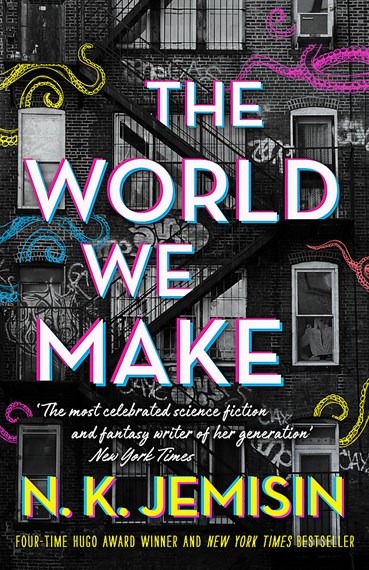The world we make by N.K. Jemison

This sequel to The city we became (2020) sees the New York city avatars reunite to save the world from annihilation by the Woman in White who is providing support to the racist xenophobic elements in society. The idea of human avatars representing different sections of New York was introduced in Jemisin’s first book, with each of the distinct boroughs of the city having a definable character represented by the personalities of Manny (Manhatten), Brooklyn (Brooklyn), Padmini (Queens), Bronca (Bronx), and Aislyn (Staten Island). Aislyn has timidly aligned herself with the Woman in White so Veneza (Jersey City) has taken her place in the team alongside Neek, New York’s primary avatar. The six of them have to use all their powers to convince other cities in the world to unite against the evil that threatens them.
People familiar with the boroughs of New York will probably find the characterisations easy to recognise, but for others, it may be advisable to start with the first book to slowly put together the whole picture. But the main themes are ones that will resonate with all who are concerned about the rise of fascism, racism and bigotry, and the intolerance of diversity. In The world we make, Panfilo, the mayoral candidate for New York, is a Trump-like demagogue who incites racial violence. Brooklyn puts herself forward as an opposing candidate, standing for the downtrodden, the poor neighbourhoods, the immigrants and diverse gender groups. In many ways this is an expose of similar issues to Vincent Tirado’s Burn down, rise up, with references to historic events such as the urban planning that saw homes of Black and Hispanic people destroyed. It is a political conflict between the powerful corporations and the powerless, something that is familiar to many countries around the world. Jemisin’s novel, though set in a sci-fi future, puts a spotlight on current issues and proposes a solution that involves courage, communication, and collaboration.
I haven’t read the first book in Jemisin’s The great cities duology, but I suspect that the first one is the one that really captures the imagination with its portrayal of human avatars of cities, and The world we make, while it can be read on its own, is really a more satisfying read for enthusiastic fans of the first novel.
Themes: New York, Cities, Avatars, Racism, Xenophobia, LGBQTI+, Science fiction.
Helen Eddy